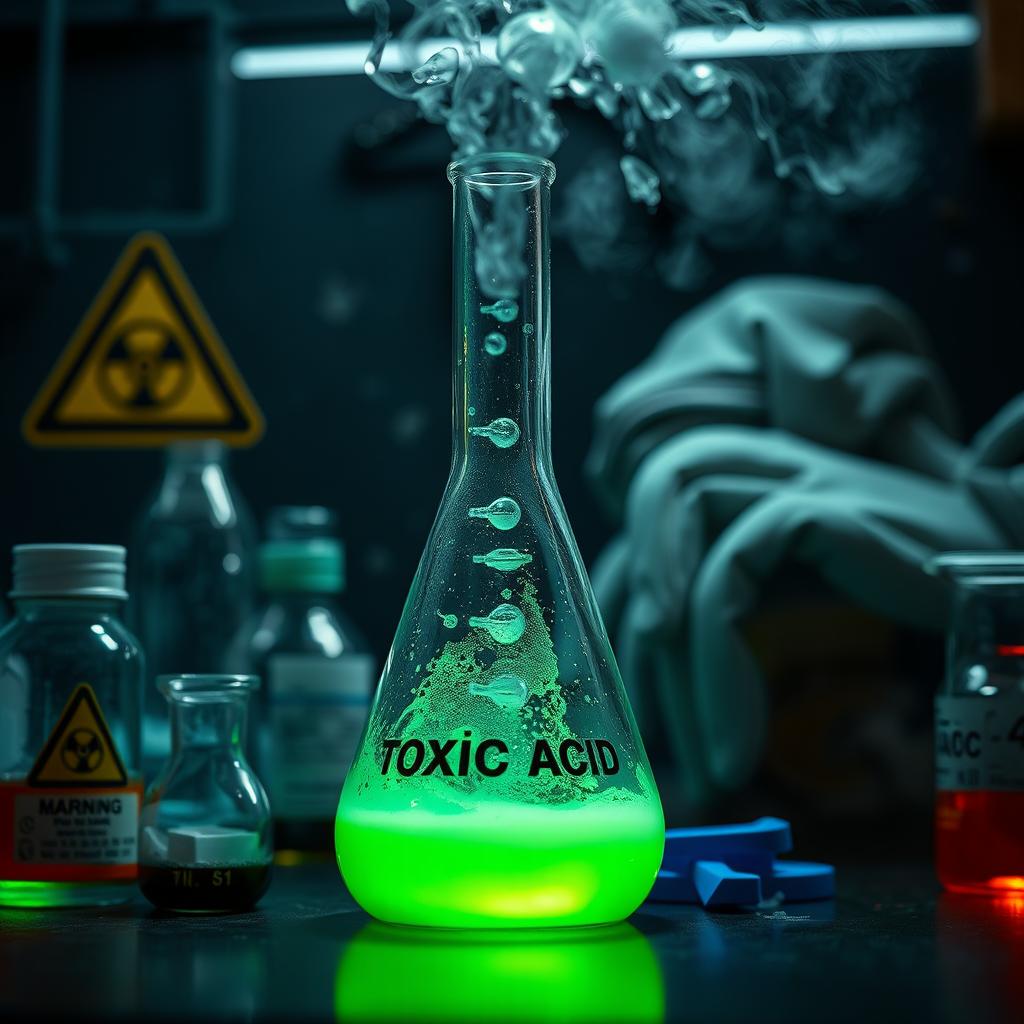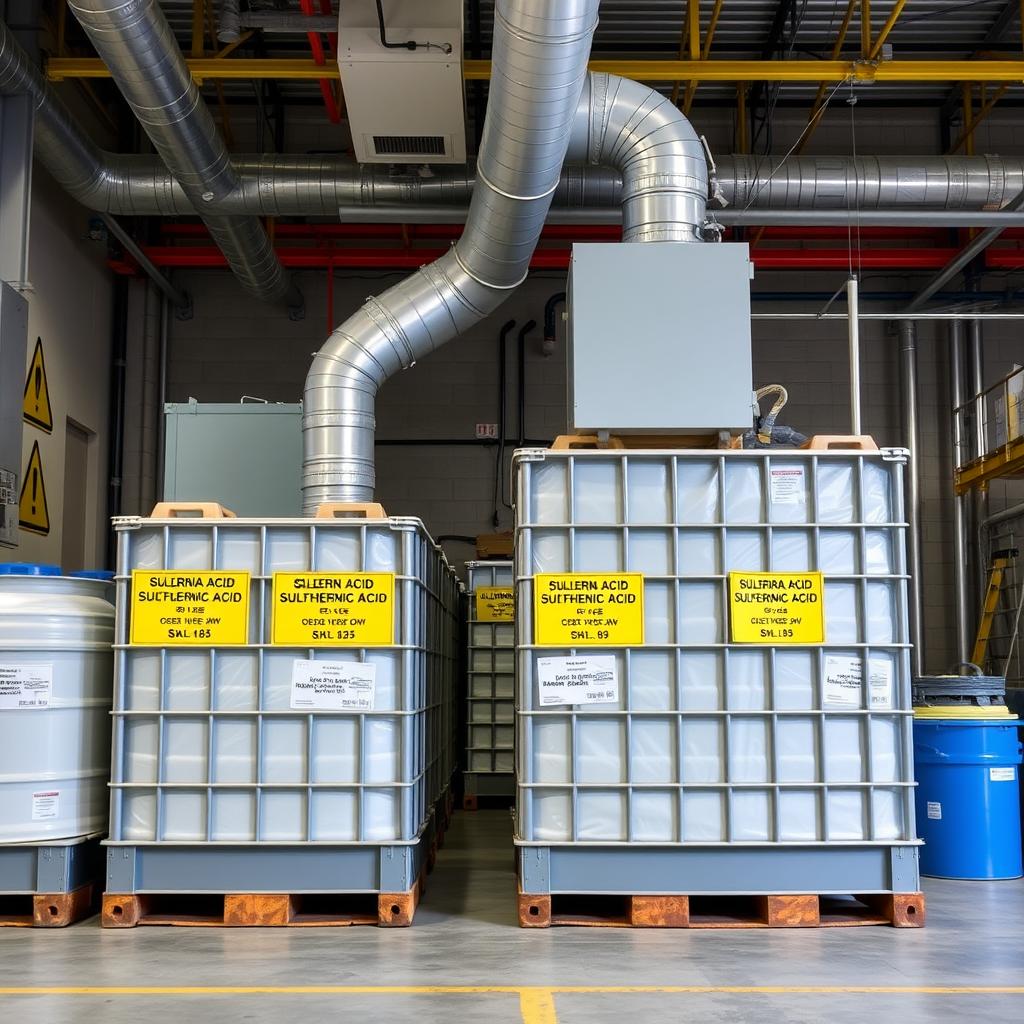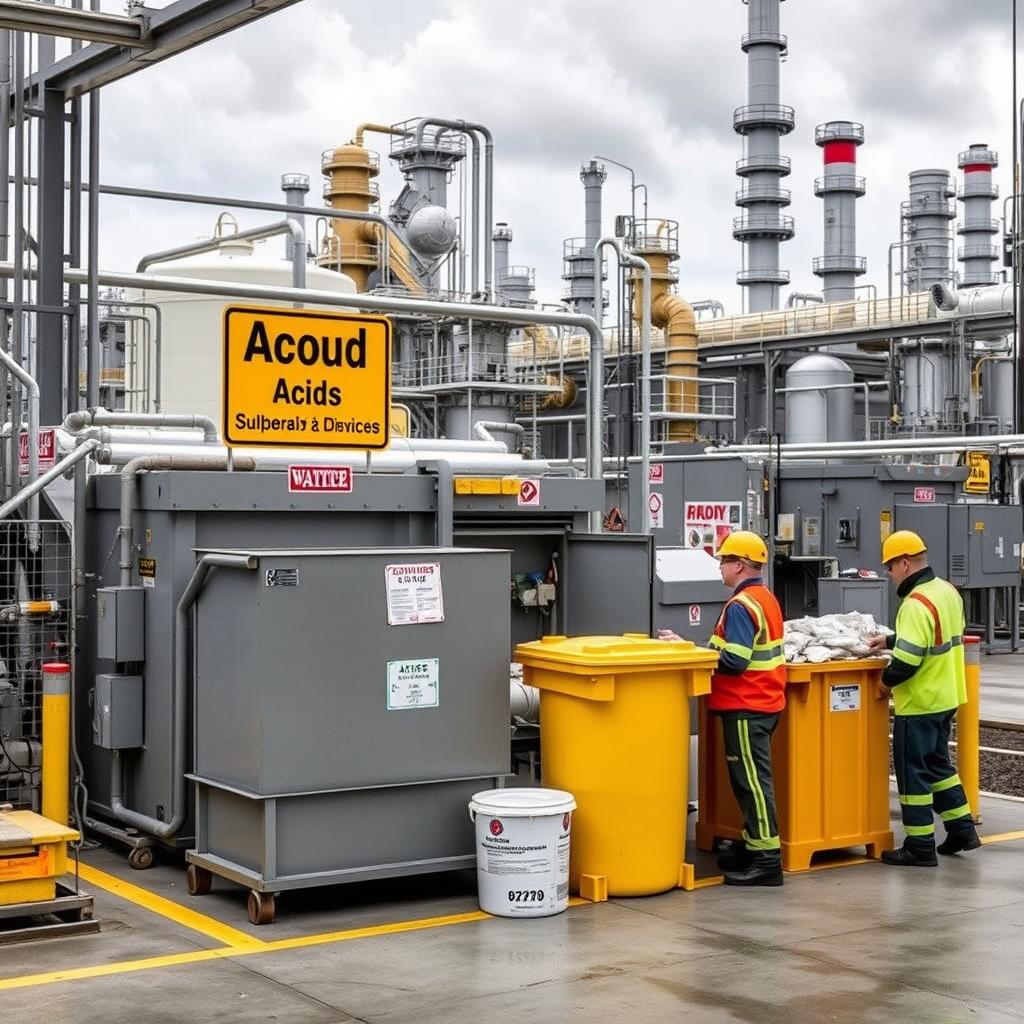What happens when sulfuric acid isn’t disposed of right? How can we safely get rid of it to avoid harming the environment and our health? Sulfuric acid is very corrosive and needs careful handling and disposal to reduce risks. To safely dispose of sulfuric acid, knowing the right steps is key. It’s important for protecting our planet and keeping us healthy.
Not disposing of sulfuric acid correctly can lead to big problems. It can pollute soil and water. By following the right rules, we can safely get rid of sulfuric acid and avoid dangers. The steps to safely dispose of sulfuric acid include checking, diluting, and neutralizing. Knowing these steps is crucial for safely getting rid of sulfuric acid and reducing risks.
Click to use Silverigroup personal shopper services
Key Takeaways:
- Learn the proper procedures for safely disposing of sulfuric acid to minimize environmental and health hazards.
- Understand the risks associated with improper disposal of sulfuric acid, including contamination of soil and water.
- Follow the correct guidelines and regulations for safely disposing of sulfuric acid.
- Assessment, dilution, and neutralization are crucial steps in the safe disposal of sulfuric acid.
- Proper training and equipment are necessary for handling and disposing of sulfuric acid.
- Safely disposing of sulfuric acid requires careful planning and attention to detail.
Click to buy citric acid from Silvairgroup
Understanding the Hazards of Sulfuric Acid
Sulfuric acid is very corrosive and needs careful handling to avoid harm. Knowing its dangers is key to staying safe when getting rid of it.
Chemical Properties and Risks
Sulfuric acid can dry out skin and eyes badly. It also reacts strongly with water and many organic materials. This makes disposal very risky.
- Highly corrosive to metals and tissues
- Releases toxic fumes when mixed with certain substances
- Can cause environmental contamination if not managed properly
Environmental Impact
Throwing away sulfuric acid wrong can pollute soil and water. It harms fish and plants, showing why proper sulfuric acid waste management is vital for the planet.
Legal Requirements for Disposal
Following local and federal rules is a must for sulfuric acid disposal. These laws give clear sulfuric acid disposal guidelines. They help protect the environment and keep people safe.

Essential Safety Equipment and Protective Gear
Learning how to handle sulfuric acid safely means having the right gear. This equipment keeps you safe from spills and exposure.
- Chemical-resistant gloves: Protect hands from corrosive substances.
- Safety goggles or face shield: Guard eyes from splashes.
- Acid-resistant apron or gown: Shield the body and clothing.
- Closed-toe shoes: Prevent acid from reaching feet.
- Respiratory protection: Use masks or respirators in poorly ventilated areas.
Click to buy Citric Acid Anhydrous from Silvairgroup
Each piece of equipment is key to staying safe while disposing of sulfuric acid.
| Equipment | Purpose | Usage Tips |
|---|---|---|
| Chemical-resistant gloves | Protect hands from acid exposure | Ensure gloves cover wrists and are free of tears |
| Safety goggles or face shield | Prevent acid splashes from reaching eyes | Choose goggles that fit snugly and provide clear vision |
| Acid-resistant apron or gown | Protect skin and clothing from spills | Wear over regular clothing and secure all openings |
| Closed-toe shoes | Guard feet against accidental spills | Opt for shoes made of non-absorbent materials |
| Respiratory protection | Filter harmful fumes in confined areas | Use appropriate masks and replace filters regularly |
Preparing Your Workspace for Sulfuric Acid Disposal
Creating a safe workspace is key when dealing with sulfuric acid. It makes sure the disposal process is both safe and efficient.
Ventilation Requirements
Make sure the area has good air flow to prevent harmful fumes. Use exhaust fans or work in a fume hood. This keeps the air clean and protects against dangerous vapors.
Emergency Response Setup
Set up an area for emergencies with spill kits, eyewash stations, and first aid. Make sure there are clear signs to help find safety gear fast in case of an accident.
Click to buy liquid Citric Acid from Silvairgroup
Containment Measures
Use systems like secondary spill trays or bunding to catch leaks. These steps help keep sulfuric acid contained, following the best disposal practices.

How to Safely Dispose of Sulfuric Acid: Step-by-Step Process
Proper disposal of sulfuric acid is key for safety and the environment. Follow these steps to manage it well.
Initial Assessment
First, check the acid’s concentration and volume. Knowing this helps pick the right safe methods for sulfuric acid disposal.
Dilution Procedures
Diluting sulfuric acid makes it safer. Here’s how to do it:
- Wear the right protective gear.
- Slowly add acid to water, not the other way around.
- Keep stirring to mix it evenly.
Click to buy frozen a grade beluga fish from Silverigroup
Neutralization Methods
Neutralizing acid turns it into something less harmful. You can use:
- A base like sodium bicarbonate.
- Lime to adjust the pH to neutral.
| Method | Description | Advantages |
|---|---|---|
| Dilution | Reducing acid concentration by adding water. | Simple and cost-effective. |
| Neutralization | Adding a base to convert acid into a neutral compound. | Effectively mitigates acidity. |
| Professional Services | Hiring experts for disposal and treatment. | Ensures compliance and safety. |
Professional Disposal Services and Options
When dealing with sulfuric acid, getting professional help is often the best option. Professional disposal services provide safe and effective ways to manage hazardous materials. They use responsible sulfuric acid disposal techniques to protect the environment and follow the law. Choosing the right service involves several factors:
- Certification and Compliance: Make sure the company is certified and meets all legal standards.
- Experience: Look for providers with a good history in handling and disposing of sulfuric acid.
- Safety Measures: Check if the service has strong safety measures to protect workers and the environment.
After picking a trusted provider, the disposal process starts. It includes collecting, moving, and treating the acid. Experts figure out the best way to dispose of it based on its amount and strength. They might neutralize it on-site or send it to a special facility for more processing. Using responsible sulfuric acid disposal techniques keeps you and your property safe. It also helps protect the environment. By choosing professional services, you make sure the disposal is done right and efficiently. This gives you peace of mind.

Storage and Transportation Guidelines
Proper storage and transportation are key to safely dispose of sulfuric acid. Following sulfuric acid disposal guidelines keeps everyone safe and ensures you follow the rules.
Proper Container Selection
Choose containers from materials like high-density polyethylene (HDPE) or glass. Stay away from materials that could react with sulfuric acid. Make sure they are tightly sealed to avoid leaks.
Labeling Requirements
Label all containers clearly with what’s inside and any hazards. Use strong labels that won’t fall off during handling or transport. This way, everyone knows what they’re dealing with and the risks involved.
Transportation Safety Protocols
When moving sulfuric acid, follow these safety steps:
- Use vehicles with the right equipment to keep spills from happening.
- Make sure drivers know how to handle hazardous materials.
- Have Material Safety Data Sheets (MSDS) ready for any questions during transport.
| Container Type | Material | Capacity | Features |
|---|---|---|---|
| HDPE Drum | High-Density Polyethylene | 55 Gallons | Leak-proof, stackable |
| Glass Bottle | Glass | 1 Liter | Chemical-resistant, reusable |
| Metal IBC | Stainless Steel | 275 Gallons | Durable, suitable for large quantities |
Environmental Considerations and Best Practices
Effective proper sulfuric acid waste management is key to protect our environment. If not handled right, sulfuric acid can pollute soil and water. This harms ecosystems and human health.
Following the best practices for sulfuric acid disposal keeps disposal safe and green. Here are some tips:
- Neutralization: Neutralizing the acid before disposal makes it less harmful.
- Recycling: Recycling sulfuric acid for reuse in industrial processes cuts down waste.
- Proper Containment: Use the right containers to stop leaks and spills during storage and transport.
- Compliance: Stick to local and federal laws for legal and safe disposal.
Using these methods protects our environment and supports sustainable industrial practices.
| Disposal Method | Benefits |
|---|---|
| Neutralization | Reduces acidity, making the waste safer for disposal. |
| Recycling | Conserves resources and decreases overall waste. |
| Secure Containment | Prevents accidental releases, protecting the environment. |
| Regulatory Compliance | Avoids legal penalties and ensures safe disposal. |

Common Mistakes to Avoid During Disposal
It’s important to know how to handle sulfuric acid safely to avoid accidents. Even with good intentions, mistakes can happen. Here are some common errors to avoid during disposal:
Improper Neutralization Errors
- Incorrect pH Levels: Not getting the right pH can make neutralization fail.
- Adding Neutralizing Agents Too Quickly: Adding too fast can cause heat and splashing, leading to burns.
- Insufficient Mixing: Not mixing well can leave acid pockets.
Storage Mistakes
- Using Inappropriate Containers: Storing acid in wrong containers can cause leaks and spills.
- Poor Labeling: Without clear labels, misuse or exposure is more likely.
- Exposure to Incompatible Materials: Storing acid near the wrong chemicals can cause dangerous reactions.
Documentation Oversights
- Lack of Record-Keeping: Not keeping detailed records can lead to legal problems.
- Incomplete Disposal Logs: Missing info in logs can make tracking hard.
- Failure to Update Procedures: Old documents may not follow current safety and legal rules.
| Common Mistakes | How to Avoid |
|---|---|
| Incorrect pH Levels during Neutralization | Regularly check pH and adjust as needed. |
| Using Inappropriate Storage Containers | Use containers made of resistant materials like polyethylene or glass. |
| Poor Labeling | Label containers clearly with contents and warnings to prevent exposure. |
| Incomplete Documentation | Keep detailed records of disposal to ensure you follow the law. |
Conclusion: Ensuring Safe and Responsible Acid Disposal
Proper disposal of sulfuric acid is key for safety and the environment. Knowing the dangers and using safe disposal methods helps a lot. This way, people and companies can lower risks. By following a clear process, you can handle sulfuric acid right. This includes wearing the right safety gear and setting up your area properly. These steps help prevent accidents.
If you’re unsure, getting help from experts is a good idea. They make sure you follow the law. Also, storing and moving acid safely helps avoid spills and harm to nature. Don’t make mistakes like not neutralizing acid properly or not keeping records. Following the best practices keeps everyone safe and helps the planet. Following these steps to dispose of sulfuric acid safely is a big step. It shows you care about the environment and your community’s well-being.
FAQ: How to Safely Dispose of Sulfuric Acid
What are the hazards of handling sulfuric acid?
Sulfuric acid is very corrosive. It can burn your skin and eyes badly. It also releases harmful fumes that can hurt your lungs if you breathe them in. It’s important to know these dangers to handle and dispose of it safely.
What safety equipment is essential for disposing of sulfuric acid?
You need gloves, goggles or face shields, and protective clothes. You also need to wear something to protect your lungs. Wearing the right gear helps you handle sulfuric acid safely.
How should I prepare my workspace for sulfuric acid disposal?
First, make sure there’s good air flow to avoid bad fumes. Set up a place for emergencies with the right tools. Also, have plans ready in case of spills. These steps help make your workspace safe for disposing of sulfuric acid.
What are the step-by-step procedures for safely disposing of sulfuric acid?
Start by checking how strong the acid is. Then, dilute it to make it weaker. Use special agents to make it safe for throwing away. Following these steps helps manage waste safely and responsibly.
When should I consider using professional disposal services for sulfuric acid?
If you have a lot of acid or aren’t sure how to make it safe, get help from experts. They know how to dispose of it right and follow the law.
What guidelines should I follow for storing and transporting sulfuric acid?
Use the right containers and label them clearly. When moving it, make sure it’s secure and won’t spill. These steps keep you safe from start to finish.
What are the environmental impacts of improper sulfuric acid disposal?
Throwing it away wrong can pollute soil and water. This harms fish and plants. Proper disposal helps protect our environment.
What common mistakes should I avoid when disposing of sulfuric acid?
Don’t mix it wrong, store it badly, or forget to document it. Follow the rules and do it right to avoid problems.
What are the legal requirements for disposing of sulfuric acid?
Rules vary by place but usually mean following guidelines, keeping records, and using licensed services. It’s key to do it legally and responsibly.
Are there any eco-friendly options for managing sulfuric acid waste?
Yes, you can recycle or reuse the acid. This is good for the planet. Using green methods and following best practices also helps.


1 thought on “How to Safely Dispose of Sulfuric Acid”
er8f0r
Comments are closed.